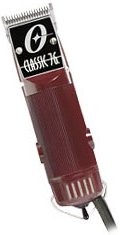Deep Thoughts about … What?
Thursday, 22 August 2013I started reading Rethinking the Western Understanding of the Self by Ulrich Steinvorth, and in its first chapter came upon this passage
As subjects we desire satisfaction of our desires; as selves we strive for the enactment of reason and free will.
(Underscore mine.) It is not auspicious to find a claim of this sort early in the work.
To say that something desires the satisfaction of its individual desires is no more than to say that it desires what it desires; nothing fails to do this, as things without desire present us with the trivial case of a null set.
The pursuit of satisfaction of each individual desire does not logically entail global satiation of desires (bliss) unless those desires are themselves somehow bounded. It's not clear what Steinvorth means by desire
(a point that I will labor), but let's assume that he means something along the lines of uncontemplated cravings and the things that are craved, as for sensual pleasures or for hoards of material goods. I don't see that they're naturally bounded. I don't see that most people make a presumption, one way or another, about whether such cravings are bounded. The impulse to bound them by attaining ἀπάθεια or nirvana seems far from universal to me (and anyway is probably not an expression of what Steinvorth calls subject
, but of what he calls self
).
It's evident that he wants to distinguish desire
as a verb from one more generally meaning to have a directed psychological impulse, and as a noun from one more generally meaning objective; but nowhere prior has Steinvorth given a definition of desire
, as noun or as verb; the remainder of the chapter and use of the index indicate that he's not going to do it at all. I see declarations such as X desires the satisfaction of X's desires
as the unconscious attempt to fill the need for a definition with a logically unassailable tautology. (Simply say X desires
and the need for definition is more apparent.) The problem is that the latter cannot do the work of the former, and the tautology is vacuous.
It's further evident from the first chapter that Steinvorth wants to distinguish happiness
from a noun simply meaning an emotional sense of attaining or of having attained one's objectives; and to distinguish utility
from a noun simply meaning usefulness. One can tell that he means to equate or approximate what he means by happiness
with what he means by utility
. But nowhere in the first chapter does he actually provide more positive definitions. He does insist that if we consider such things as the glory of suffering
to be a form of happiness
then the idea of happiness becomes inflated and loses its meaning
, but I want to know what meaning it would lose. Again using the index, it doesn't seem that he bothered with providing any of these definitions anywhere else in the book.



![[cover image of The Red Tree]](wp-content/uploads/2009/09/redtree_225.jpg)
![[cover image of The Arrival]](wp-content/uploads/2009/09/arrival_225.jpg)
![[cover image of Emigrantes]](wp-content/uploads/2009/09/emigrantes_225.jpg)
![[cover image of Tales from Outer Suburbia]](wp-content/uploads/2009/09/suburbia_225.jpg)
![[cover image of American edition of Tales from Outer Suburbia]](wp-content/uploads/2009/09/suburbia_am_225.jpg)
![[cover image of The Haunted Playground]](wp-content/uploads/2009/09/playground_225.jpg)
![[cover image of Tales from Outer Suburbia]](wp-content/uploads/2009/09/lostthing_225.jpg)

